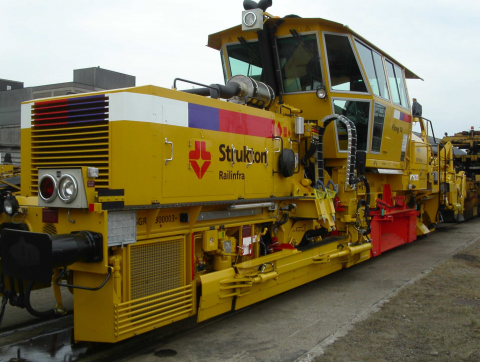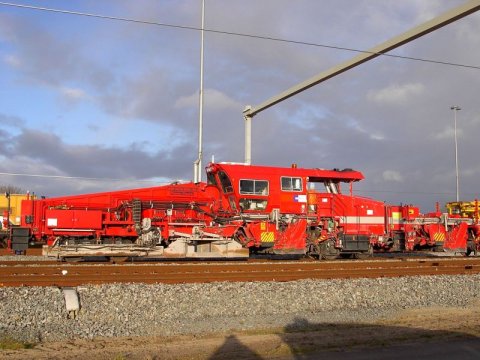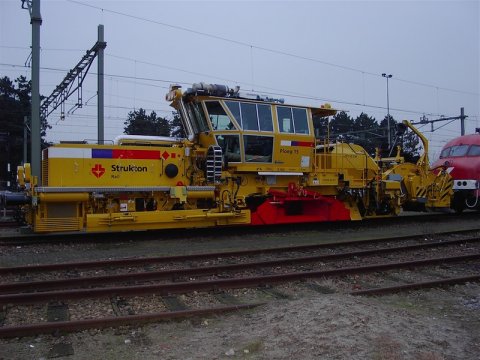

Ballast profiling machine
After tamping the track with a tamping machine the SSP brings the roadbed back into the right profile. How is
works, I’ll explain. After tamping the ballast usually gets unloaded by the ballast train. Right after that they bring
the ballast with the wing in the right profile. The middle bridge distributes the ballast on the track in a special way ,see pictures on the right top of this page. After the ballast is divided on the track it all has to be finished neatly with a brush. Thisbrush is hold in a container and brushes the surplus of ballast from the sleepers. There are two types of brushes: one for timber sleepers and the second for concrete sleepers. The excess of ballast is
discharged through a conveyor belt down to the left side of the track or the right side of the track. But it is also possible that the ballast is loaded in a silo. This happens when there is not enough ballast somewhere else on the track.On those places you can use the surplus of ballast from the silo.After all this is happened the track is completely full of ballast again, the sleepers areneatly brushed and the ballast is brought back in the right shape.

Ploug 14
- Manufacturer: Plasser & Theurer
- Type: SSP 110 SW
- Serialnumber: 758
- Year of Construction: 2004
- SRM no:166024
- NVR no: 99 84 941 0 524-5

Ploug 15
- Manufacturer: Plasser & Theurer.
- Type: SSP 110 SW
- Serialnumber: 876
- Year of Construction: 2008
- SRM no: 1660125
- NVR no: 99 84 941 0 525-2

Ploug 16
- Manufacturer: Plasser & Theurer
- Type: SSP 110 SW
- Serialnumber: 877
- Year of Construction: 2009
- SRM no: 1660126
- NVR no: 99 84 941 0 526-0

Ploug 18
- Manufacturer: Plasser & Theurer
- Type: USP 2010 SWS-2K
- Serielnumber: 788
- Year og Construction: 2005
- SRM SE no: 9020
- NVR no: 99 84 942 5 020-9



